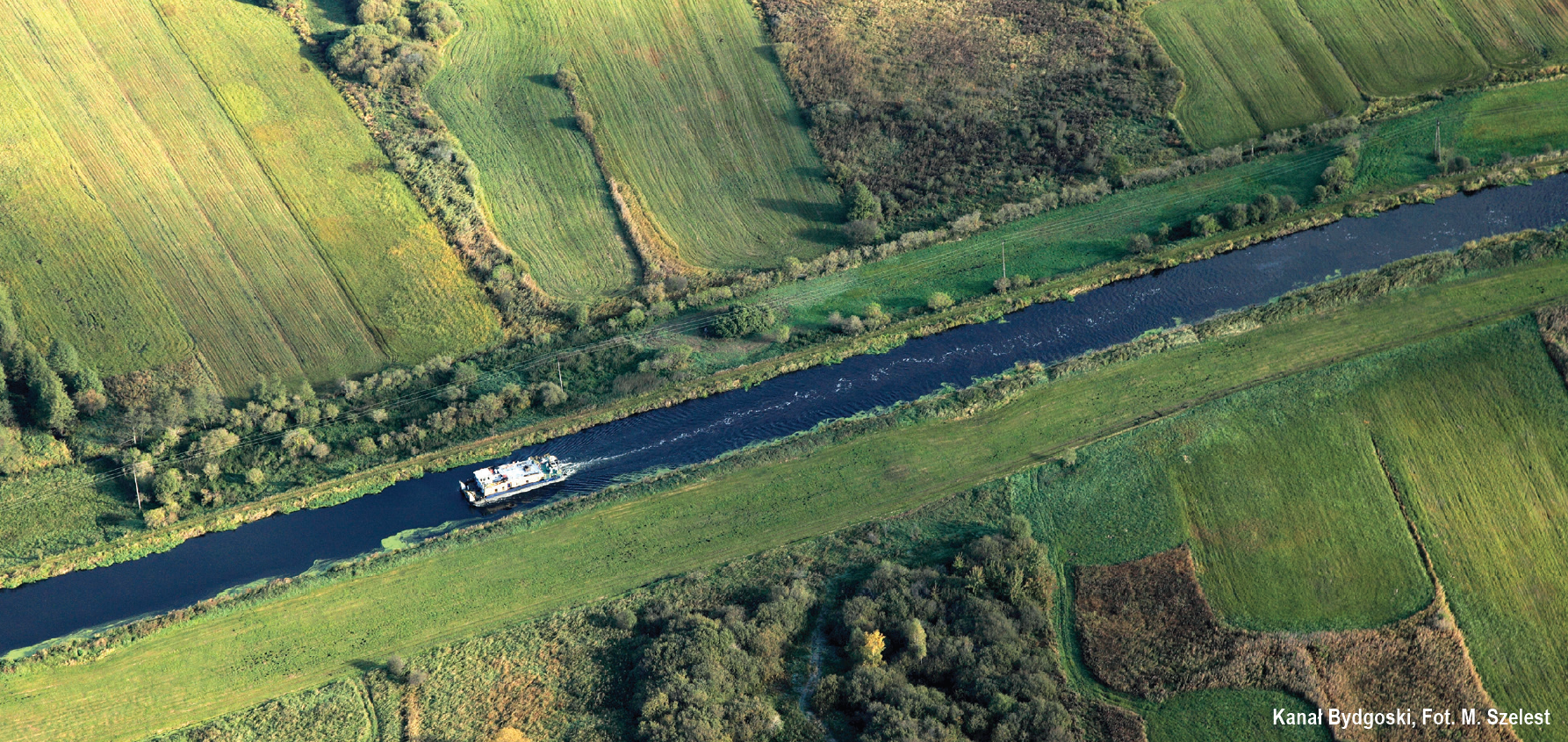The Bydgoszcz Canal (BC) is – after the Jagiellonian Canal – the second oldest operating navigable canal in Poland. Thanks to it, the Odra and the Vistula have gained a water connection. It was built in a record time of 18 months, in the years 1772-1774. 12 thousand settlers from Lower Saxony and the Czech Republic were brought here for the construction. The most striking feature of the Bydgoszcz Canal is that it is straight as an arrow. In the years 1908-1915, it was rebuilt, then the number of locks was reduced from 9 to 6 and the length of the canal was shortened from 26.6 to 24.5 km. The locks are 57.4 m long and 9.6 m wide. The width of the canal is from 28 to 30 m, the depth is 1.6-2.0 m. From 2005, the canal was entered in the register of monuments, and since 2006 it is under the care of the new museum of the Bydgoszcz Canal. The canal begins in Bydgoszcz, joining the Brda, and ends in Nakło, joining the Noteć. It is a class II waterway. During the summer season, you can expect a green carpet of duckweed that hinders navigation. The banks of the canal are not suitable for mooring.
The next locks on the trail are: Nakło Wschód (38.9 km), Józefinki (37.2 km), Osowa Góra (21.0 km), Prądy (20.0 km), Czyżkówko (16.0 km) and Okole ( 14.8 km). The Okole and Czyżkówko locks are powered by electricity – the others are powered manually.
We enter the Bydgoszcz Canal through the Nakło Wschód lock (39 km). In the village of Potulice (34 km), during World War II, there was the Lebrechtdorf resettlement camp, and after the war, the Central Labor Camp for Germans, where 3,500 German prisoners died. There is also a war cemetery and a monument dedicated to the victims of Nazi crimes.
Behind the Zielonczyn village (25 km), close to the Canal, there is a combat bunker no. 5 of the fortifications of Bydgoszcz outskirts, in the shape of an arch, resting at one end on the Bydgoszcz Canal, and the other on the Brda River. It is also a fortification open-air museum. The entire system consists of 17 reinforced concrete bunkers, which in 1939 stopped the German offensive for a few days.
At 23 km, the Bydgoszcz Canal joins the Upper Noteć Canal. This canal allows us to continue our cruise on the Great Loop of Wielkopolska.
We are welcomed in Bydgoszcz by the Upper Osowa Lock (21 km) – a white, red and blue flag with the city’s coat of arms flutters on the mast. Just before the Czyżkówko lock (16 km), there is the only marina on the Bydgoszcz Canal, “Gwiazda”. From here, a walking trail leads along the old section of the Bydgoszcz Canal to the city centre. It was put into operation in 2009 and offers the most important services for boaters. In the distance of one kilometre, between the locks of Czyżkówko and Okole, we pass three road bridges, one railway bridge and a gas pipeline. In 1968, at the Okole lock (15 km), one of the episodes of the film “Czterej pancerni i pies” was filmed about saving a German town from flooding and the loss of its turret by the “Rudy” tank. A memento of the film is a turret located near the lock.
